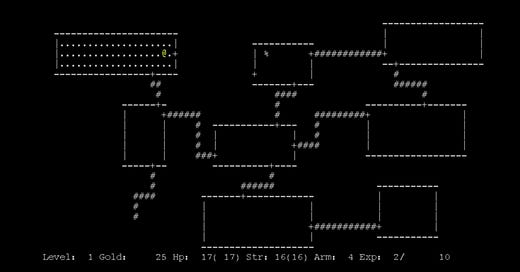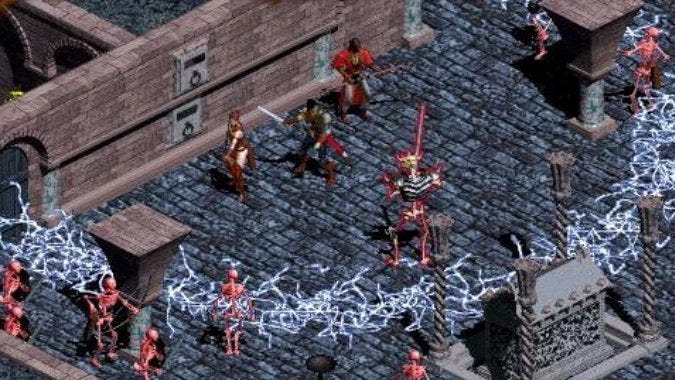From Rogue to Diablo: A Look Back at the RPG That Spawned a Genre
Rogue is the unsung hero among classic video games. Developed by Michael Toy, Glenn Wichman and Ken Arnold, Rogue was first made available in 1980 for the Unix platform. Over the next three years, Rogue became the most played game on college campuses.
At its core, Rogue was a random dungeon generator that provided a different roleplaying game each time it was played. It used ASCII (text) graphics with letters of the alphabet used to represent different monsters and symbols used to draw the dungeon.
Players sought out the Amulet of Yendor, and crawled through level after level in their quest to find it. Designed to be nearly impossible to solve, it is estimated that only one in one hundred thousand games could be completed without the use of a cheat.
Spawning an Empire.
Rogue was not just popular with college students. It was also a popular design concept with many other games developed around the same principles. Chief among these was Moria, a game that used Tolkien’s Lord of the Rings as a backdrop to provide a dungeon-crawling experience where adventurers sought to destroy the Balrog. Another popular game using the same concept was Omega, which took the adventure outdoors allowing the player to travel over a map to various dungeons.
These games became known as rogue-like games and, amazingly enough, are still being developed to this day. Angband is one of the most popular freeware rogue-like games still in active development. Like Moria, it is based on Tolkien’s Lord of the Rings.
Rogue-like Games Go Mainstream
While most rogue-like games are freeware products using either ASCII graphics or crude icon graphics, there have been several commercial games released that are based on rogue-like elements. The most popular of these is Diablo and its sequels Diablo II and Diablo III.
In Diablo, players ventured through a series of dungeons with randomly generated levels, picking up treasure and gaining in character levels until they were powerful enough to slay the namesake, Diablo. Much like Rogue, the outdoors was limited to a small town where players bought equipment and sold their treasure.
As Omega did for Rogue, Diablo II took the game outdoors with a series of overland areas that players explored to solve quests and locate dungeons. Keeping with the rogue-like theme, these overland areas were also randomly generated. In Diablo III, the game becomes a bit more static, but the random elements for the maps are still in place.
While there have been other commercial releases with rogue-like elements, none of them were as popular as Diablo. Using a top-down isometric engine, Diablo combined elements of the action RPG Gauntlet with the randomness and replayability of Rogue to create one of the top-selling computer games of its time.




